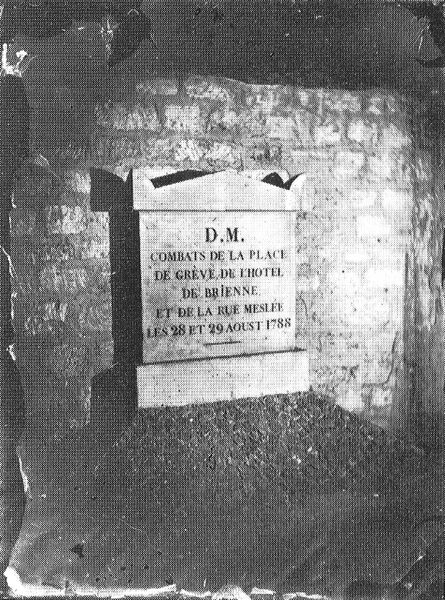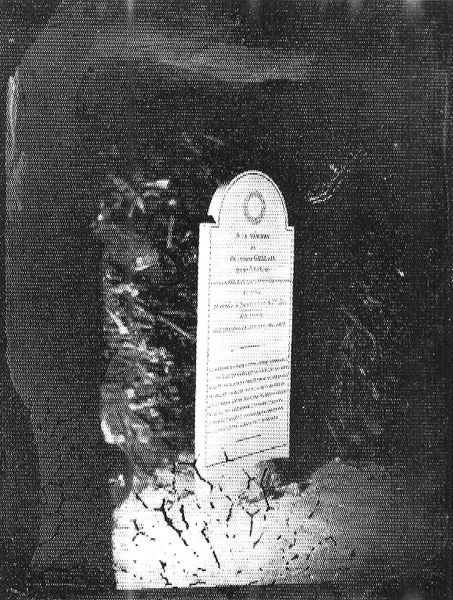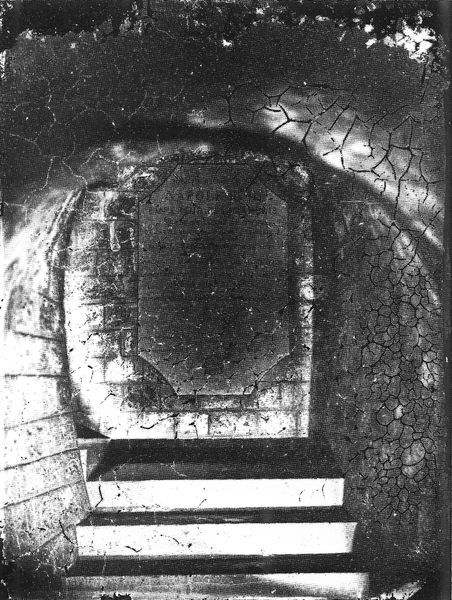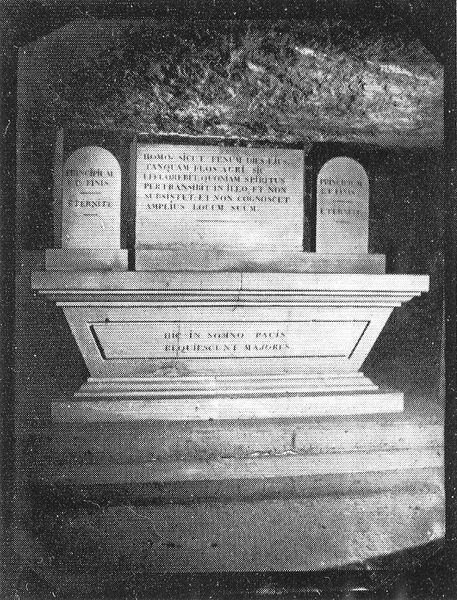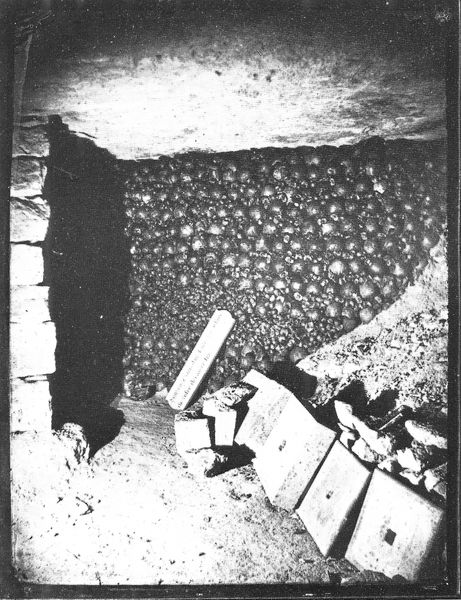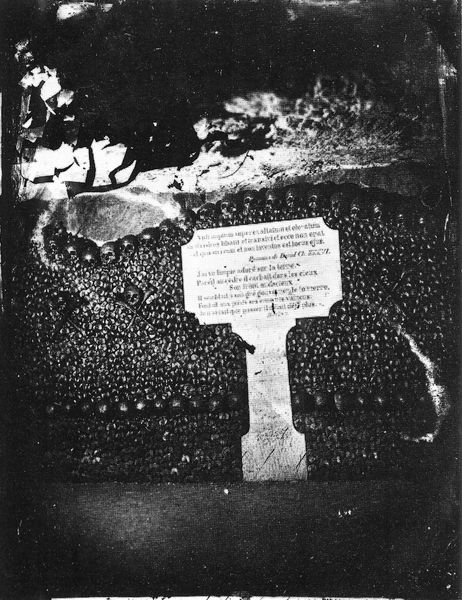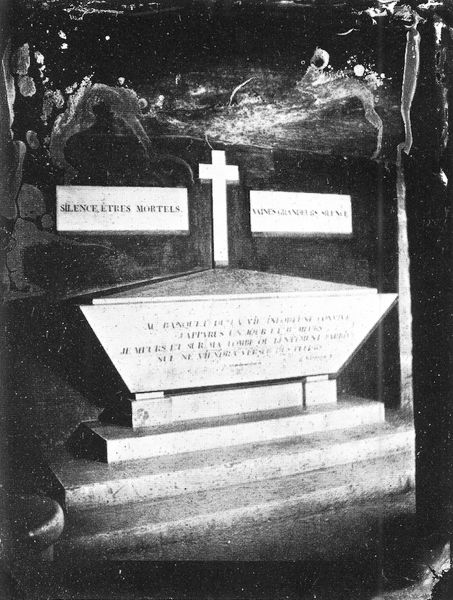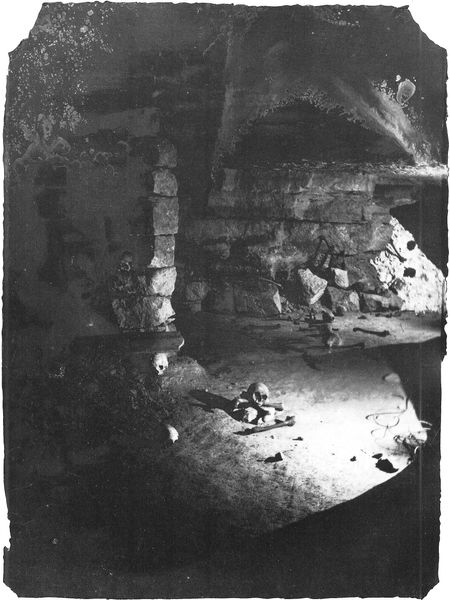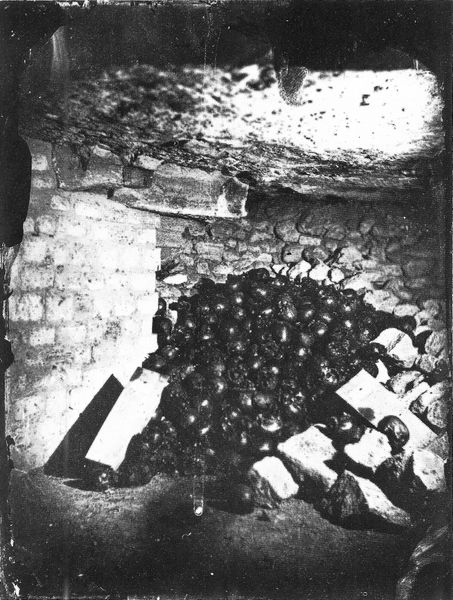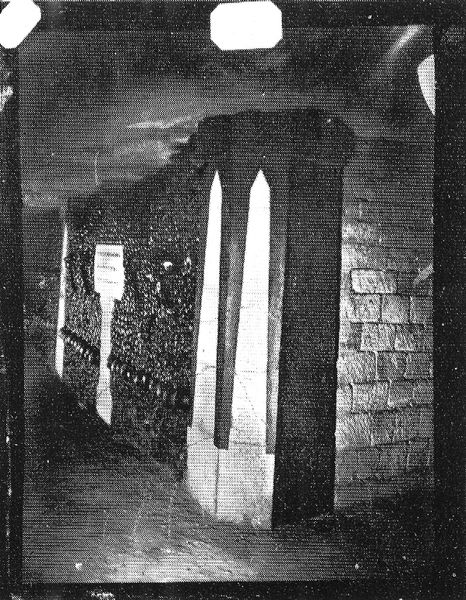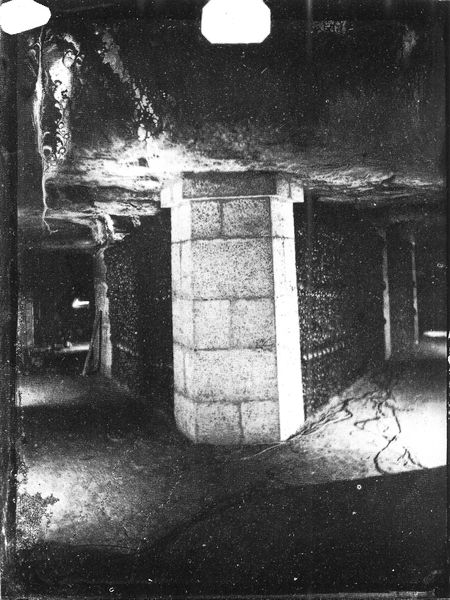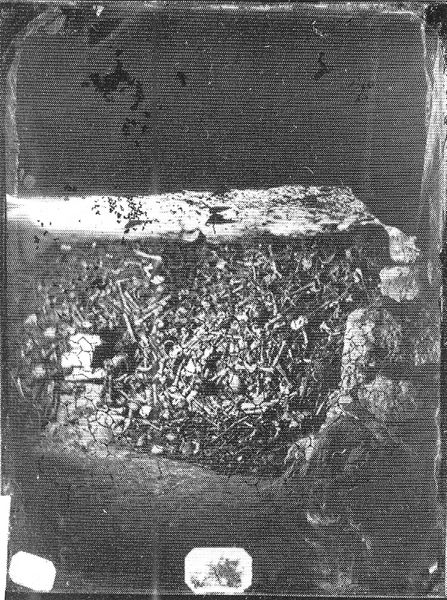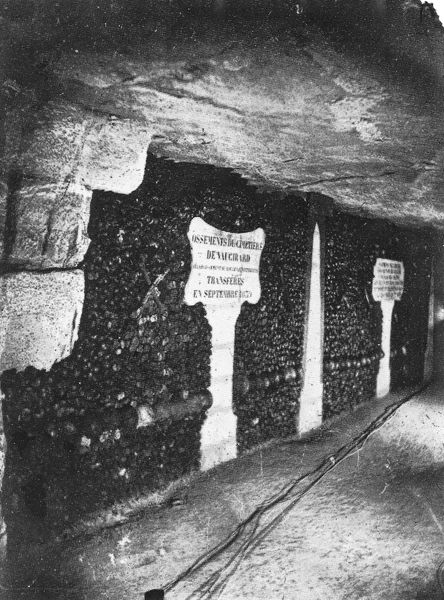
photography, gelatin-silver-print
#
monotone colours
#
16_19th-century
#
black and white photography
#
landscape
#
monochrome colours
#
photography
#
gelatin-silver-print
#
monochrome photography
#
monochrome
#
realism
#
monochrome
Copyright: Public domain
Editor: Here we have "Catacombes De Paris," a gelatin-silver print taken in 1861 by Felix Nadar. It feels immediately dark, both literally because it's black and white, and emotionally. It's dominated by rough stone, surrounding what looks like a memorial plaque. What do you see in this image, considering its stark composition? Curator: The appeal lies precisely in the composition’s austerity. Nadar’s decision to center the memorial plaque—notice the sharp angles and clean lines against the textured stone—forces the eye to focus on its inscription, inviting the viewer to engage in textual as well as visual interpretation. The strategic use of light, dappled across the rugged stonework, enhances the tonal contrast, underlining a duality: the crude versus the refined, the ephemeral against the memorialized. The stark monochrome contributes, wouldn’t you agree, to its timeless quality? Editor: I do. It really highlights those contrasting textures and forms. I wonder if a color image could ever convey that so strongly. It almost feels like Nadar is stripping everything down to its most essential visual components. How would you consider the image's structural arrangement further? Curator: Structuralism encourages us to dissect underlying systems. The 'Catacombs' uses verticality to communicate. Note how the memorial stands perpendicular to a field of rubble that then extends vertically into a stone wall. Through structural organization, the image proposes death is both an end-point as well as a bridge to something more timeless or historical. What message could a system of horizontality indicate, instead? Editor: Good point. Perhaps a horizontal view would emphasize decay or a flatlined finality. Looking at it formally has really given me a better appreciation for the artistry here and those symbolic contrasts, the ephemeral memorialized. Curator: Indeed. Formal analysis gives us tools for articulating why a piece, stripped of historical or social narrative, can still deeply resonate on a visual and, therefore, intellectual level. It underscores the image's inherent artistic merit.
Comments
No comments
Be the first to comment and join the conversation on the ultimate creative platform.
